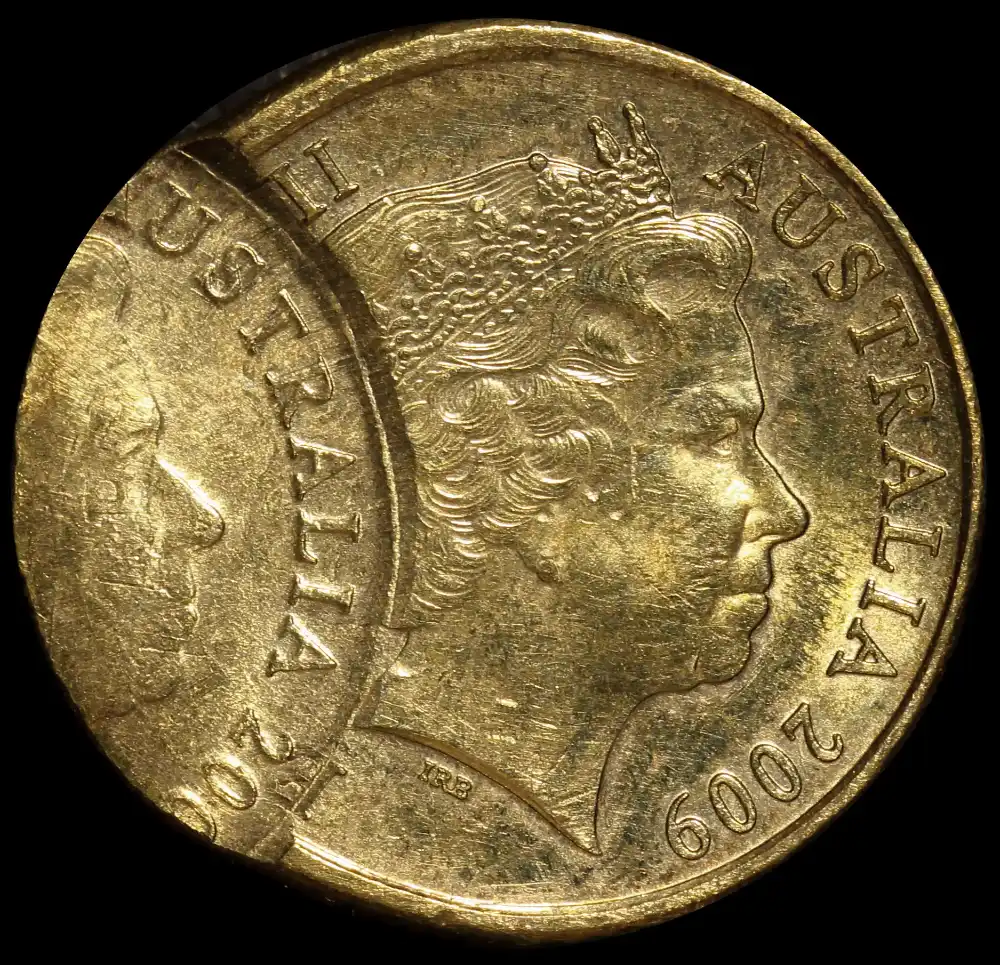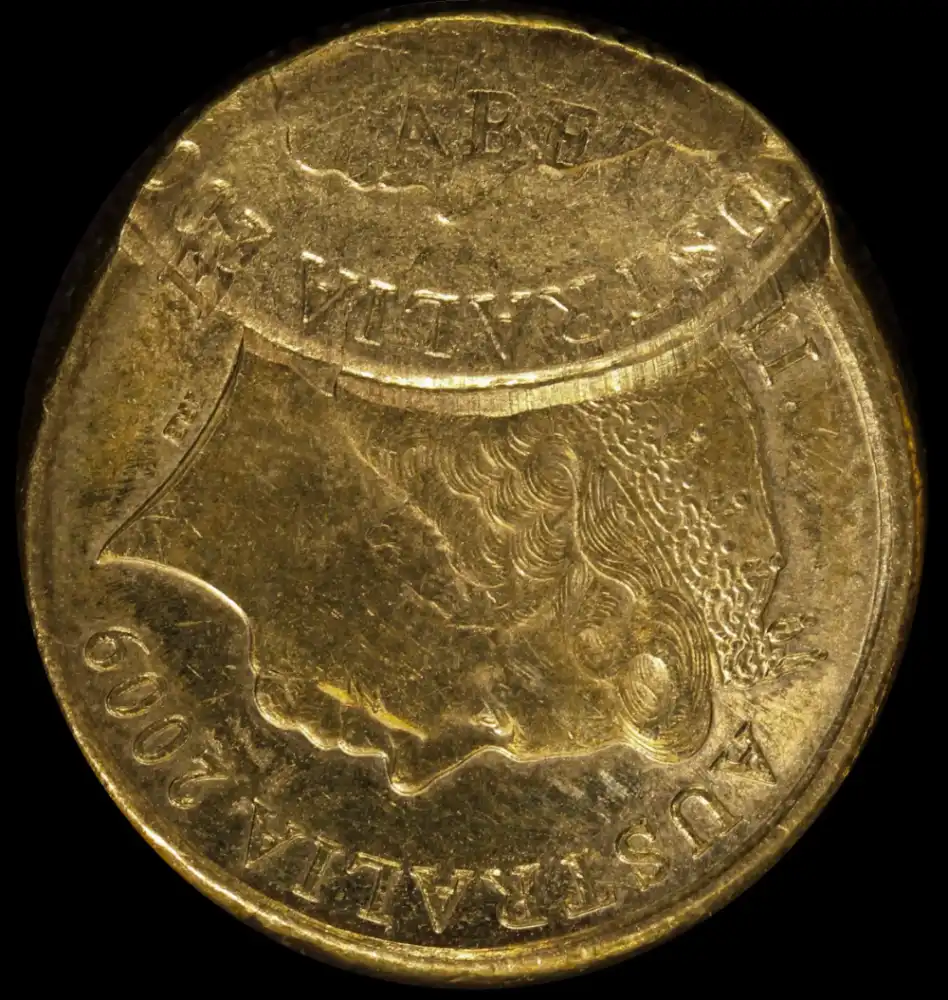My Latest Learning Opportunity - A Counterfeit Double-Struck 2 Dollar Coin

We handled a large deceased estate late last year, the collector involved was interested in a range of areas - gold sovereigns; decimal coins; world banknotes and Australian error coins.
It took up a large portion of our main safe and office kitchen for a month or so while we worked our way through it, he certainly was a dedicated collector!
It's taken me some time to realise that we are something of a numismatic clearing house here in Perth - we buy everything that comes in through the door, whether it's a bucket of rusted old pennies, a crate of proof sets, foreign banknotes, Rare Coin Company portfolios and even decimal error coins!
The range of vendors we see covers all of the colours in the rainbow - collectors dedicated to their craft, widows and widowers disposing of their loved one's collection, outright crooks and folks that bought their coins from sources beyond the pail - think of Alibaba or eBay after a few drinks late at night.
Even though we spend millions of dollars a year on our inventory, it isn't often that I get caught out buying something that is completely without value. When I do, though, it's generally because of my own hubris or lack of attention to a minor but important detail.

Counterfeit Double Struck 2 Dollar Coin - Reverse
Getting back to the story from the deceased estate, one of the coins included was a double-struck 2 dollar coin from 2009. I could see it was on an auction card from a trusted source, so I had no reason to think it wasn't genuine. I did some research online and could see similar coins either were or had been offered by other dealers around the country, all at varying prices. I appraised the retail value of the coin, set a buy price for it and moved onto the next coin.
We were successful in tendering for the collection, so we posted them all for sale on our website. This particular 2 dollar coin was sold to a client out of state who is into such things, he submitted it to PCGS for authentication. I got a surprise about 6 months later when he said that it had been designated by PCGS as having been struck with counterfeit dies - the coin itself was genuine, but the second strike wasn't.
I immediately offered a full refund, and awaited the arrival of the coin in the mail. That was an expensive day, not only was I looking down the barrel of that refund but I had to also refund a client in the UK who didn't receive the valuable sovereign we'd posted to him. That was another $1,800 odd in value... (Australia Post advised they'd handed it over to Royal Mail and despite me getting a statement from RM that they in fact did not receive it at all, Australia Post could not tell me where it was nor would they apologise for losing the damn thing!)

Counterfeit Double Struck 2 Dollar Coin - Obverse
I'm sure there was just 1 fibre of my being that was prepared to deal with this return in a mature way. Fortunately, that was enough and I resolved that when the coin arrived, I'd learn about what I missed so it wouldn't happen again.
I examined the coin with a magnifier when it came back, then took some more images of it. Not wanting to stay with my own conclusions, I decided to reach out to Mark and Kathryn at the Purple Penny in Adelaide. They are keen students and well into error coins, so I banked on getting some constructive feedback. (Peter Andrews, it was 50/50 whether I contacted you first!)
I sent Mark the images and he pointed out a few aspects that are now quite obvious:
- The second strike was weak and there was a fair bit of the original design evident on both sides. This is important as it can be an indicator the die pressure wasn't high enough, not an issue in either of Australia's mints;
- The legends had a different appearance to those elsewhere on the coin;
- Aspects of the elder's portrait were different (very minor aspects, but they were different nonetheless);

Counterfeit Double Struck 2 Dollar Coin - Obverse Legend Detail
All of this confirmed the PCGS assessment that the coin was not a genuine minting error, but a backyard job by someone with technical expertise and a desire to profit from those of us new to the field.
I've seen a number of false error coins that were obviously counterfeit brockages, but until this coin I'd never seen an error coin struck with a counterfeit die before.
Fortunately my mistake didn't cost the earth and I've learned from it. I believe in the adage “A smart man learns from his own mistakes, but a wise man learns from the mistakes of others.” While it would have been better to have learned from someone else's mistake, I reckon it's better to be smart than dumb.
Comments (6)
"Cheap" Australian $1 silver coins on E-bay
By: Dave Darke on 6 August 2025Andrew, I have noticed a number of Australian $1 silver bullion coins for sale recently on E-bay, for around the $30 mark, or cheaper, when others are around the $80 mark, or so. The dearer coins are probaly the "right" price for silver content. I have been recently bombarded with ads for these cheaper coins by E-bay, and after examining the ads, the cheaper coins are being sold from different locations across China. I am assuming these coins are not the real deal, and noticed one ad mentioned steel in the mix. That makes me guess that steel blanks are being covered with a thin silver layer and stamped to look like the real coins, or the blanks are copied like a genuine coin then coated in a thin layer of silver. The various ads mention so many coins sold, and so many still available for sale, so buyers must be thinking they are getting a bargain. Have you noticed these ads? Dave.
Sterling and Currency Response
Dave, Fortunately I haven't seen those ads in my own algorithm, although I'm not surprised they are out there. eBay has been a venue for sellers of that type of product for quite some time, we need to be really careful when buying anything of value from sellers that are outside accepted channels. Knowing how to determine a legitimate seller from one that is just profiteering and also learning how to tell an authentic item from one that is counterfeit are both really necessary skills!
Postage
By: Simon on 3 August 2025Andrew, you mentioned being out of pocket by $1800 for the missing coin that was not delivered. Is this a common occurrence for online businesses and secondly how do you safeguard or avoid this happening in the future- simon
Sterling and Currency Response
Simon, Thankfully this isn't a common occurrence. I don't keep firm records on postal losses, but I would expect we've had no more than 6 in the past 5 years. The risk of loss is higher when items are addressed or packed poorly, so we mitigate that risk by ensuring we know the recipient; address and pack the parcel properly, and only used shipping with tracking and insurance. Our policy would allow us to make a claim for this lost parcel, the loss of the no claim bonus would not make it worthwhile however. Regards,
Weight
By: Rod on 3 August 2025Would be interested to know the weight 6.6 ?
Sterling and Currency Response
Rod, the 2 dollar coin itself is genuine, so weighs spot on at 6.60 grams. The die used to strike the coin a second time was counterfeit. Regards,
Oops
By: Peter Andrews on 3 August 2025A lot of people fell for those fakes soon after they were made and I have little doubt that in future, many more will appear from long time error collections. John Belcher wrote an excellent article on these forgeries on page 39 in the April 2025 issue of Independent Coin News.
Sterling and Currency Response
I saw that article Peter, unfortunately it was after I bought the coin! A great resource for collectors though.
New learning about double struck decimal coins
By: Brian Kirton on 3 August 2025Hello Peter, I found your article to be very interesting and informative. The next time I see a double strike coin listed for sale on Ebay I will pay close attention to the detail and reference your article. Thank you.